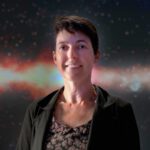
World-renowned radio astronomer, Dr Miller Goss, will present an in-depth discussion on the history of radio astronomy and how it informs Australia’s future potential in the field at Curtin University on 23 February.
In this special lecture, Dr Goss will also examine the life of one of Australia’s pioneer radio engineers and early radio astronomers, Joseph Pawsey.
Currently based at the National Radio Astronomy Observatory in New Mexico, Dr Goss has been involved in a number of prestigious astronomy projects over the years, including the Very Large Array and the Very Long Baseline Array from 1988 to 2002.
Curtin radio astronomy group Research Fellow and event organiser, Dr Jean-Pierre Macquart, said the lecture would be a fantastic opportunity to get up-close-and-personal with Dr Goss and learn about his unique take on how the science has unravelled over the years.
“His specific interest and research in radio astronomical studies of the interstellar medium (the material in space between the stars) in our Galaxy make him a very well informed and fascinating personality,” Dr Macquart said.
“If you would like to find out what World War II radar technology has to do with detecting signals from distant galaxies and how an antenna placed on the cliff top of a quiet Sydney seaside suburb revolutionised our understanding of the Universe, then this lecture is for you.”
Date: Wednesday 23 February 2011
Time: 5.30pm – 7.00pm
Venue: Tim Winton Lecture Theatre, Building 213, Room 104, Curtin University, Kent Street, Bentley
Media are invited to this event.
Media Contact:
Andrea Barnard, Public Relations, Curtin University
Tel: 08 9266 4241, Mobile: 0401 103 755, Email: andrea.barnard@curtin.edu.au


